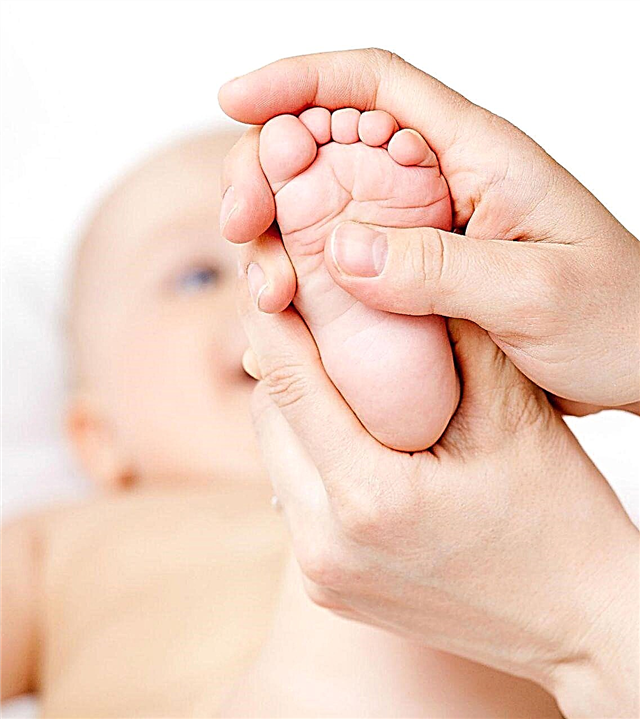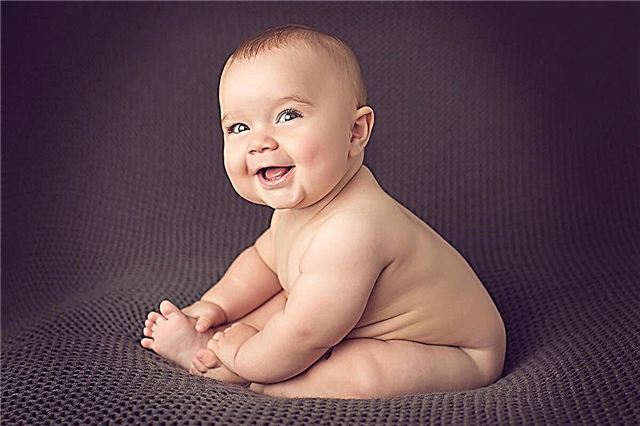
Rickets is a diagnosis that scares parents of babies even more than the flu. Since childhood, mothers and fathers have in their heads the grandmother's scary stories that if you eat badly, then a terrible rickets will surely happen.
Girls and boys have grown up, have become parents themselves and already know that rickets has nothing to do with the amount of food eaten, but this does not reduce questions, especially if the local pediatrician sighs sadly at the next examination of the baby and says that the baby has a condition close to rickets or in general already some degree of rickets. The well-known children's doctor Evgeny Komarovsky tells about what it is and whether it is necessary to be afraid of it.

About the disease
Rickets is a typical childhood disease. It is associated with insufficient bone mineralization, with improper formation of skeletal bones. This condition occurs when the baby is actively growing, and his body is pathologically lacking in vitamin D. Rickets can be associated with a lack of calcium, phosphorus, and sometimes it occurs with completely normal indicators of these substances in the blood test. The disease can be acute, subacute and recurrent, and also has three degrees of severity.
Rickets begins, gains momentum, and then it declines itself, leaving only the signs of the disease to the doctors to study. Secondary ailment develops quite rarely, mainly against the background of severe kidney disease, serious metabolic disorders, as well as in children who have been given anticonvulsants for a long time.


It is believed that rickets most often occurs in children born in winter or late autumn, as well as living in regions whose climatic conditions do not often allow them to be in the sun, or in regions with an unfavorable environmental situation (smoke, air pollution, low sunshine. days a year).
Artists are more likely to develop rickets than children who feed on breast milk, since the former absorb only 30% of calcium, and the latter up to 70%. Vitamin D deficiency interferes with calcium absorption.
The main source of this important vitamin is the sun's rays, which fall on the baby's skin.

The classic signs of rickets medicine considers sleep disturbance in an infant, tearfulness, poor appetite, fearfulness (when the baby shudders from loud noises), sweating, especially at night, baldness of the back of the head, with which the baby rubs against the diaper or pillow due to the itching of the scalp. The smell of the patient's sweat has a specific sour smell. All these symptoms are characteristic of the initial stage of the disease, which can last about a month.


In the active stage of the disease, various disorders of the skeletal system, softening of the bones, deformation start, the child may have a lag in mental and physical development. Typical signs are rickety "rosary", "bracelets" and "strands of pearls". With such beautiful names, medicine means not very beautiful manifestations of thickening of the transition of cartilage tissue into bone. "Bracelets" - on the handles, "rosary" - on the ribs, "string of pearls" - on the fingers. Another visual sign is also called quite poetically - "Olympic forehead". It manifests itself in a noticeable protrusion of the frontal bone forward.
Then the disease declines, leaving the child for the rest of his life the consequences of rickets - poor posture, deformation of the chest, changes in the bones of the legs. The disease in girls is considered especially dangerous, since the narrowing of the pelvic bones, which may remain after the rickets suffered, in the future may cause difficulties in carrying out natural childbirth. For such girls and women, a cesarean section is recommended.

Doctor Komarovsky about rickets
Modern pediatricians are very fond of this diagnosis. Firstly, because he relieves the doctor of all responsibility for possible problems in the development of the baby (anything can happen, but after all, they warned - rickets!), And, secondly, it is as difficult to refute it as it is to prove it. In this case, the doctor makes a diagnosis that does not exist, for example, 0-1 degree rickets. There is no such disease, says Komarovsky. And rickets of the 1st degree, if desired, can be found in nine out of ten young children. In 99% of these guys, the signs of rickets will go away by themselves.
If the doctor told you that the child has rickets and has not ordered additional studies, you do not need to worry - there is no rickets.
If the doctor has reason to assume real rickets (and this happens very rarely), then he will definitely give a referral for X-ray examination of the bones of the lower extremities and forearm, and recommend donating blood for the content of vitamin D, calcium, phosphorus.

Nowhere in the world is rickets diagnosed for signs such as chest deformity, sweating, or impaired appetite. And baldness in the back of the head is generally not considered a sign of rickets, according to Komarovsky, just the thin hair of a newborn, when he starts to twist his head (by 3-4 months), is mechanically "wiped" on the diaper, and there is no need to look for any pathological reasons for this.
Sweating of a baby in 90% of cases is associated with an incorrect temperature regime in the apartment where he lives, as well as with the fact that his parents do not know how to dress him reasonably and, as a result, are simply wrapped up.
A crooked chest can be hereditary in general, it is enough to take a close look at the sternum of dad, grandfather, great-grandfather. If there is no family pattern, then again there is no reason to worry, because when the need for calcium becomes less, when bone growth slows down somewhat, all the shortcomings and curvature will go away by themselves.

But most pediatricians stubbornly do not want to notice the modern world standards for diagnosing this disease, continue to use the information published in medical textbooks 50 years ago in their work, and therefore the number of children who, due to sweaty legs and a bald nape alone, were given the verdict "rickets" , in Russia today is approaching 70% of the total number of newborns and infants, while only 1% of children have a real problem.

Treatment according to Komarovsky
Most often, doctors who diagnosed a child with rickets prescribe shock doses of vitamin D and coniferous salt baths. Such water procedures are very useful for children's health, but they have nothing to do with the treatment of real rickets, says Komarovsky. Appointment of shock doses of a vitamin is generally a medical crime. The maximum amount for a child is no more than 500 units per day or 1 drop of an aqueous solution "Aquadetrim". An overdose in a baby can cause severe vomiting, diarrhea, impaired urinary function, increased pressure, up to the development of cardiopathy and cardioneurosis.


If you do not want to expose your child to such a risk, do not rush to follow the recommendations to take the vitamin in lethal doses, besides in the summer, when walking on the street already makes up for the deficiency of the substance in the body quite well. The dosage should be taken more than reasonable.
Walking and fresh air for a child with rickets (or suspicion of it) is very useful. The intake of cereals or mixtures with a vitamin content must be introduced into the baby's diet. It will not hurt to consult a good pediatric otropeda, who, based on X-rays of the long bones of the legs (lower leg) and forearm, will dispel or confirm concerns. In the second case, he will certainly give his recommendations.

If rickets is associated with a lack of phosphorus, calcium, and vitamin D deficiency, and this is confirmed by laboratory tests, newborns are treated with cholecalciferol. Calcitriol may be prescribed depending on the test results. This is not enough for premature babies, they are definitely recommended to take calcium gluconate and potassium phosphate.
The prognosis for most children with real, not fictional rickets, is quite favorable. But what parents should definitely make sure of is that there is no calcium deficiency, it occurs more often in children with rickets, both with it and separately. If blood tests show this deficiency, then it is worth starting to give the child calcium supplements in strictly defined age-specific dosages.

Prevention
Preventing rickets is not expensive, difficult, or difficult. And therefore, says Komarovsky, it must be done without fail. If the baby is breastfed, a nursing mother should take vitamin D, the baby will receive his dose with milk.
Artists, especially those born in winter, can be given a vitamin from almost the very birth (from the second or third week), but if he eats an adapted mixture, then it already contains this substance. As soon as a baby who feeds on mother's breast milk has about a third of the daily intake of complementary foods, he should be given vitamin D if prepared with regular milk.
If baby porridge already has it in its composition (and most of these modern instant porridges do) or is prepared on an adapted mixture that also contains this vitamin, then there is no need for a separate intake of the drug.


A half-hour exposure to the sun per day covers the daily need for vitamin D. If there is little sun (from October to March in most regions of Russia), then vitamin preparations should be taken strictly in the age-specific dosage. An overdose of this vitamin is worse than a lack of it.

You can learn more about rickets from the next program of Dr. Komarovsky.



